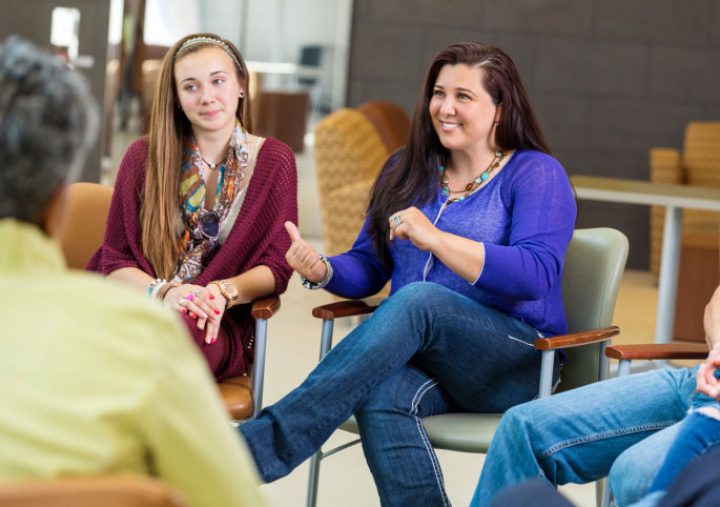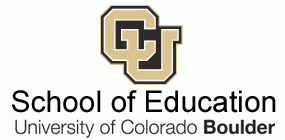Research Brief: How Teacher Social Networks Support and Constrain Sustainable Reform

Coburn, C. E., Russell, J. L., Kaufman, J. H., & Stein, M. K. (2012). Supporting Sustainability: Teachers’ Advice Networks and Ambitious Instructional Reform. American Journal of Education, 119(1), 137–182. doi:10.1086/667699
Summary
Implementing school-wide instructional improvements is a challenge. Sustaining these changes after the initial supports are gone is equally difficult and less often studied. The authors of a recent article wanted to understand how teachers’ social interactions affected whether they sustained instructional changes in their classrooms. The authors identified several conditions of professional peer relationships that either supported or reduced the sustainability of reform-based practices.
Authors:
BY VANESSA DE LEÓN & ANNIE ALLEN - FEBRUARY 2016
Research Design
Four schools were studied, with contrasting organizational conditions: The first had a strong professional community and strong teacher expertise, the second had a strong professional community and a weak teacher expertise, the third had a weak professional community and strong teacher expertise, and the last had a weak professional community and weak teacher expertise. Across the schools, a total of twelve teachers were studied over three years of data. In years 1 and 2, the reform math practices were implemented and supported through PD and coaching. In year 3, with the end of the program and a shift in the schools’ priorities to the achievement of English learners, supports for the reform-based teaching were withdrawn.
The authors defined reform-based instructional approaches in terms of three characteristics:
- The ability to set up and maintain high-cognitive-demand instructional tasks
- The ability to attend to, elicit, and build upon student thinking
- The ability for reasoning to take on the intellectual authority for mathematical correctness rather than on the text or the teacher
Data were collected through interviews, observations, and document analysis and was analyzed across the different social dimensions as well as through an “egocentric approach” to social network analysis. In an egocentric approach, the analyst maps networks focused on the individual teacher and the networks they report, including information on social interaction type, depth, and frequency.
Researchers assumed multiple factors and pathways led teachers to sustain reform-based math practices. Qualitative comparative analysis helped the authors identify which configurations of strength of ties with peers, depth of interactions, and access to expertise best supported teachers in sustaining reform-based practices.
Research Focus
There has been a great deal of research on successful and unsuccessful implementations of reform-based practices, but far fewer studies have investigated how these practices are sustained after supports for implementation have run their course. When funding for new programs, professional development (PD), or coaching positions ends, or when district or school priorities shift, what experiences and supports help teachers sustain reform-based practices in the classroom?
Several studies (Cooper et al. 1998; Gersten et al. 2000; Klingner et al. 1999; McLaughlin and Mitra 2001) have pointed to teachers’ professional relationships with one another as key to sustaining instructional reform. Interactions with colleagues provide teachers with feedback, access to knowledge, and a social support system to maintain or shift their practice. Yet little research has been done about which dimensions of these relationships matter most.
The researchers in this study sought to understand how elementary school teachers interacted around mathematics reform ideas after the initial effort’s funding had ended. Over three years, the researchers used social network analysis and qualitative comparative analysis to investigate the relationship between teachers’ social networks and the degree to which teachers used reform-based practices in highquality ways once supports had been removed.
Teachers’ networks are complex and can form within and across schools. Social network theory, as used in this research, is an approach to understanding the nature and extent of individuals’ professional ties to colleagues and how these affect their teaching practice.
The researchers looked at three different aspects of teacher relationships:
- The strength of teachers’ social ties (the frequency of interactions between teachers)
- Depth of interaction (focus on surface issues versus core content or pedagogical issues)
- Access to expertise
Researchers mapped patterns of relationships by looking these three factors, and were able to draw conclusions about which patterns of support led to sustainable improvements (see Research Findings).
Research Findings
Teachers with a solid grasp of instructional strategies related to the reform were able to make adjustments over time, or rely on their social networks to support them through these changes.
The authors identified several conditions of peer relations that either supported or reduced teachers’ use of reform-based practices. Teachers who participated in networks characterized by strong ties, expertise, and high-depth interactions were able to sustain practices despite challenging circumstances or school-wide change. Teachers who were missing critical supports were not able to achieve a high level of sustainability.
The authors named these patterns as follows, arranged from most to least supportive of sustaining reform. (See Research Focus section for explanation of strength, depth, and expertise.):
- Synergy: High depth, high expertise, and strong ties in the same year
- Adding Depth Over Time: High expertise and strong ties in Year 1 followed by high depth in Year 2
- Missing Pieces: Absence of strong ties in Year 1 and absence of expertise in Year 2
- Scratching the Surface: Absence of depth in Years 1 and 2
No one aspect of interaction led to sustainability. Rather, what matters is the combination of strong interactions (frequency and social relationship strength), expertise among those involved in the interactions, and high depth interactions. This study further shows that teachers may not need strong networks for extended periods of time, but do seem to need it the first year or two following the reduction of PD or other supports.
Implications for Practice
For teachers, it is important to foster or support existing social networks that exhibit strong ties, expertise, and depth, especially after other supports for a new initiative have been reduced. While these networks do not necessarily need to be maintained for an extended amount of time, they are is important to help teachers grapple with substantive issues with one another when they are trying out relatively new instructional practices.
Attending To Equity
It is important to foster strong social networks for teachers, within and across schools, to help them make and sustain instructional changes. If teachers are provided with the necessary social supports, then higher quality reform-based practices are more likely to be sustained. This, in turn, helps teachers provide all students with continuous, high-quality learning experiences.
Questions For Reflection
- For teachers and school leaders: In what ways have you worked with colleagues to integrate new pedagogical strategies or curriculum materials into your classroom practice? What are more and less successful ways of collaborating to support professional growth and community?
- The authors of the paper emphasize the importance of regular collaboration between teachers, with a focus on the core content and issues of teaching. How can these professional ties be purposefully supported?
- What access to expertise (for example, a teacher who’s experienced and skilled in new strategies or tasks being implemented) do teachers and school staff have? How can schools find ways to make good use of the teacher expertise already present in the school, and seek outside expertise when needed?
Related Briefs
- Bevan, B. (2011). Reconceptualizing “PD” as continuous professional learning: A research brief discussing Webster-Wright’s, “Reframing professional development through understanding authentic professional learning.”
- King, H. (2013). Current trends in science teacher professional development. An ISE research brief discussing van Driel et al., “Current trends and missing links in studies on teacher professional development in science education.”
Related Research
- Coburn, C. E., Mata, W. & Choi, L. (2013). The embeddedness of teachers’ social networks: Evidence from mathematics reform. Sociology of Education, 86(4), 311- 342.
- Coburn, C. E. & Russell, J. L. (2008). District policy and teachers’ social networks. Educational Evaluation and Policy Analysis, 30(3), 203-235.
- Hopkins, M., Spillane, J. P., Jakopovic, P., & Heaton, R. M. (2013). Infrastructure redesign and instructional reform in mathematics: Formal structure and teacher leadership. The Elementary School Journal, 114(2), 200-224.
- Spillane, J. P., & Hopkins, M. (2013). Organizing for instruction in education systems and organizations: How the school subject matters. Journal of Curriculum Studies, 45(6), 721-747.
References
- Cooper, Robert, Robert E. Slavin, and Nancy A. Madden. 1998. “Success for All: Improving the Quality of Implementation of Whole-School Change through the Use of a National Reform Network.” Education and Urban Society, 30(3), 385–408.
- Gersten, Russell, David Chard, and Scott Baker. 2000. “Factors Enhancing Sustained Use of Research-Based Instructional Practices.” Journal of Learning Disabilities, 33(5), 445–56.
- Klingner, Janette K., Sharon Vaughn, Marie Tejero Hughes, and Maria Elena Arguelles. 1999. “Sustaining Research-Based Practices in Reading: A 3-Year Follow-Up.” Remedial and Special Education, 20(5), 263–74, 287.
- McLaughlin, Milbrey W., and Dana Mitra. 2001. “Theory-Based Change and Change- Based Theory: Going Deeper and Going Broader.” Journal of Educational Change, 2(4), 301–23.
ALSO SEE STEM TEACHING TOOLS
STEM Teaching Tools content copyright 2014-22 UW Institute for Science + Math Education. All rights reserved.
This site is primarily funded by the National Science Foundation (NSF) through Award #1920249 (previously through Awards #1238253 and #1854059). Opinions expressed are not those of any funding agency.
Work is licensed under a Creative Commons Attribution-ShareAlike 4.0 Unported License. Others may adapt with attribution. Funded by the National Science Foundation (NSF). Opinions expressed are not those of any funding agency.


 Email Feedback
Email Feedback


